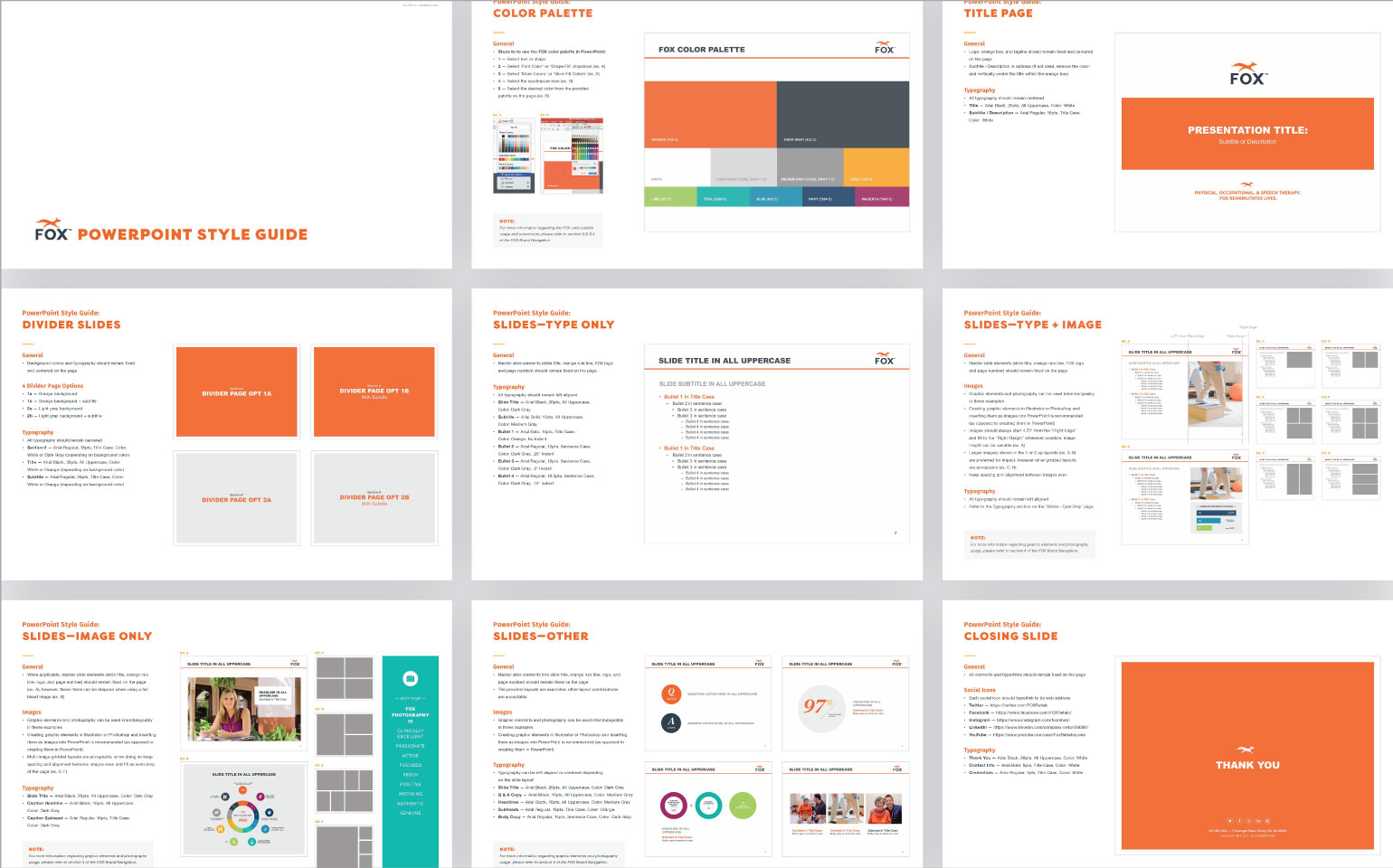Part of my role in taking companies through a rebrand is to audit and assess their current brand materials. I’m not in sales, but as a marketer and consumer, I’m both a brand builder and brand enthusiast. And I have to say, the PowerPoint decks I see are, simply put, horrific.
Often a sales deck is the first part of your brand a customer sees. And, as we all know, you never have a second chance to make a first impression. Your sales presentation may well determine whether a potential customer buys from you or from your competition. Still, most presentations I encounter lack impact, brand continuity, and are seldom compelling enough to motivate a buying decision
I can’t fathom why sales teams and marketers do such a poor job with their decks. Cramming in all they can fit on a page, having no informational hierarchy, inserting displeasing, unprofessional imagery, and overlooking any kind of design thinking. In many cases, it is the sales teams or even an administrative assistant who puts these together. They do the best they can, but clearly have no guidelines.
A sales presentation is an important part of your overall brand experience. As such, it should be an intentionally designed series of moments.
The PowerPoint should show understanding of your potential customers’ needs. Then it should show how you, the presenter, are uniquely qualified and able to satisfy those needs in the best way. Offering the most valuable benefits to be realized by your solution. This, of course, should all be encompassed within your brand.
Just as your business cards, your lobby signage, your corporate brochure, or your website are part of your brand experience—your sales presentation should be, as well. It should come straight from your brand’s foundation, highlighting your brand’s differentiating qualities. Then and only then, will you be telling your story and creating a truthful, authentic brand experience that sells your product or service.
The 7 Steps to Creating a Powerful Sales Presentation:
- Structure and simplify your message.
- Tell your brand story.
- Highlight your brand differentiation.
- Enhance your story.
- Showcase your experience.
- Be interactive and transparent.
- Have a clear call-to-action.
1. Structure and Simplify Your Message.
The more complex your product or service, the more a need for simplicity. You’ve ideally gathered a good amount of insights and information prior to your presentation. But if you try to share it all, your audience will hear nothing. It’s easy to get lost by over-explaining or discussing topics that aren’t relevant when you don’t have a solid structure to follow. Editing is key. And you must have a hierarchy, a structure. A good structure, (and a good copywriter!), will help you prioritize and organize all that information so it will have the greatest impact on your audience. Without a clear, easy-to-follow, consistent structure, a presentation can make your product seem even more complex than it is. Instead, work toward a structure that makes your product or service appear seamless and easy to understand.
2. Tell Your Brand Story.
The BOLTGROUP definition of a brand story is: “A narrative that conveys why the brand exists, as portrayed through the voice of the brand, supporting the purpose and promise to drive meaning of the brand to an emotional level with its constituents.” People love a good story. Tell it in the context of their needs. They want to understand how your value proposition is going to enhance their business and affect their bottom line.
Your sales presentation is a natural vehicle to get this done. In fact, it may be the best chance you have to demonstrate exactly why your product or service is perfect for the prospect.



